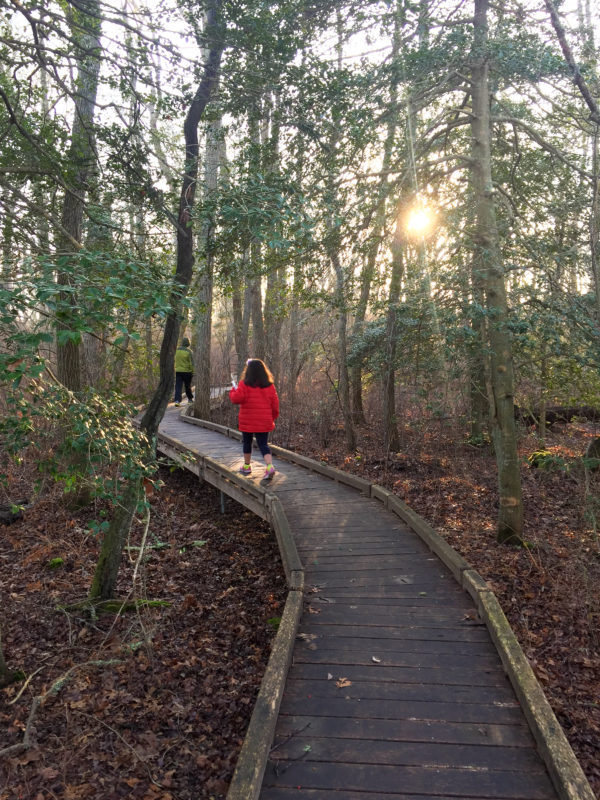John C. Whitehead Preserve
With an accessible boardwalk through diverse wetlands and forest, John C. Whitehead Preserve in Little Compton holds outdoor adventures that people of all ages and abilities can enjoy. The changing variety of plants and animals found here through the year will have you visiting this stunning Nature Conservancy preserve again and again.
Features

Explorers of all ages can enjoy John C. Whitehead Preserve’s quiet forest from the Dundery Brook Trail boardwalk. (Image: The Nature Conservancy)
Discover a truly special place to explore in the woods, wetlands, and open meadows of John C. Whitehead Preserve. This preserve’s undisturbed habitats serves as an exceptional home for wildlife, but remains easy for anyone to explore thanks to an ADA-accessible boardwalk that connects to wide, flat trails. As you walk or hike, slow down to pay attention to your surroundings and tune your ear to the many bird calls echoing from the canopy above.
Trails
Three trails provide a range of options to explore at John C. Whitehead Preserve. An easy place to start is Dundery Brook Trail, an ADA-accessible boardwalk. This trail is 0.6 miles long and meanders through forest strewn with wetland. If you’re with kids, don’t miss the outdoor classroom about halfway down the trail, where young adventurers can learn about the habitat they’re exploring. (Download trail map)
Just before it turns east towards Bumblebee Pond, Dundery Brook Trail branches west to connect with Hope’s Path, a 0.7-mile trail that continues through forested wetland and around a number of small ponds. About halfway down the trail, you’ll cross over the waters of Dundery Brook by way of a lovely stone slab bridge. Hope’s Path ends at the Preserve’s western entrance along West Main Road.
If you continue past the entrance to Hope’s Path on Dundery Brook Trail, the path curves and becomes Blanche’s Path. This 0.6-mile trail enters Bumblebee Preserve, traversing along a wide, flat cart path. This trail follows along the curving edge of Bumblebee Pond, providing views of peaceful waters bordered by waving reeds, and passes through two open meadows. The trail ends at the northwest corner of the second meadow.
Habitats & Wildlife
Stroll the trails at John C. Whitehead Preserve at any time of year, and you’re almost guaranteed to encounter wildlife. That’s thanks to the large tract of undisturbed forest and wetland community it protects, dominated by old oaks, beech trees, and tupelo in the center. Red maple and shrub wetlands flourish among the trees and along the forest edges. These streams and wetlands make Whitehead Preserve a particularly good place to look for amphibians, from choruses of spring peepers to wood frogs, green frogs, gray tree frogs, spotted turtles, and snapping turtles. In the winter, you may spot otter and fisher cats hunting and cavorting in these streams.
Its variety of protected habitat also makes John C. Whitehead Preserve a haven for birds. Great horned owl hunt here in the winter, and American woodcock perform their acrobatic mating flights above as winter gives way to spring. The boardwalk provides a fantastic place to watch for spring songbirds, from warblers to vireo to bright Baltimore orioles. In Bumblebee Pond, look for migratory ducks in the winter and slow-stalking green heron in the summer.

Founded in 1951, The Nature Conservancy is a global nonprofit conservation organization dedicated to conserving the lands and waters on which all life depends. Guided by science, TNC creates innovative, on-the-ground solutions to our world's toughest challenges so that nature and people can thrive together.

 Download Property Map
Download Property Map